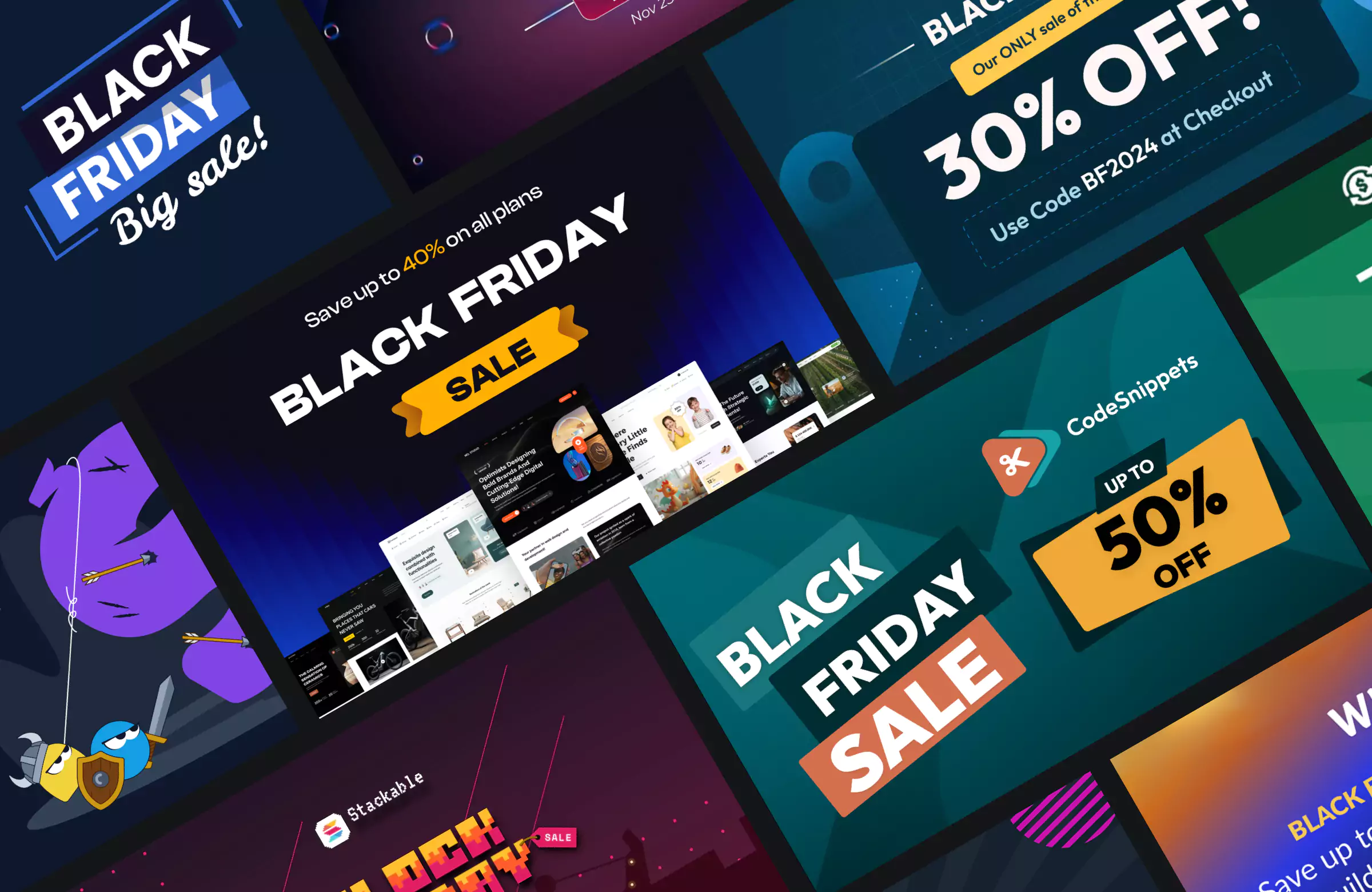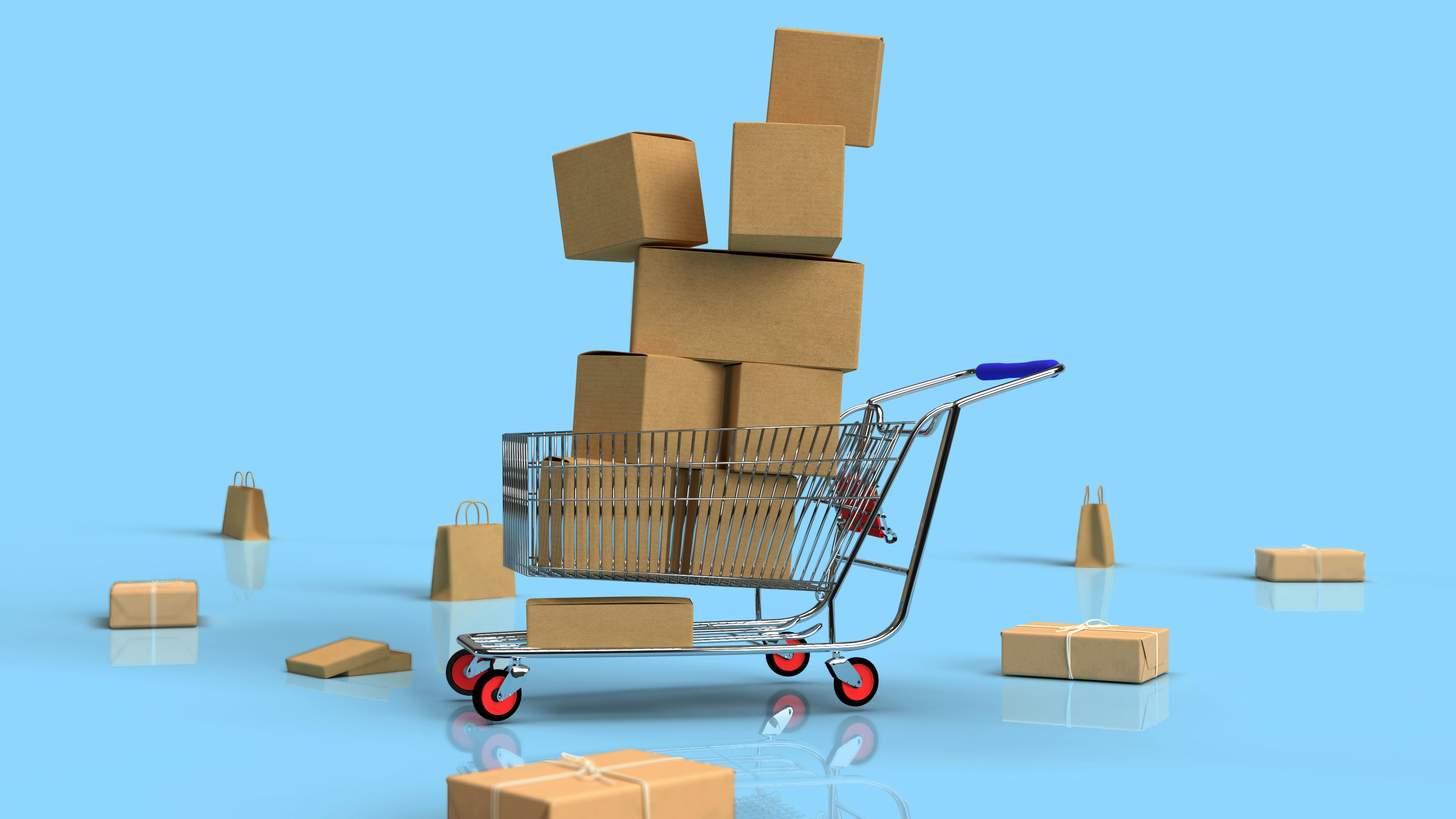Most eCommerce businesses fall into one of two categories: B2B (business-to-business) or B2C (business-to-consumer).
While both models operate in the digital marketplace, they have distinct differences in target customers, pricing structures, sales processes, and marketing strategies.
Choosing between B2B and B2C eCommerce depends on who you’re selling to, how you price your products or services, and the complexity of your sales journey.
In this guide, we’ll break down the key distinctions between B2B and B2C eCommerce, explore real-world examples, and help you determine which model – or hybrid approach – is best for your business.
Key Takeaways:
- B2B eCommerce involves businesses selling to other businesses with longer sales cycles, higher order values, and personalized pricing.
- B2C eCommerce targets individual consumers, emphasizing fast transactions, emotional marketing, and seamless checkout.
- Sales processes differ: B2B is consultative and complex; B2C is streamlined and transactional.
- Pricing models vary: B2B uses negotiated or tiered pricing; B2C typically offers fixed, transparent prices.
- A hybrid model may suit brands targeting both professionals and everyday consumers (e.g., beauty, electronics).
Table of Contents
What is B2B eCommerce?
B2B eCommerce refers to online transactions where businesses sell products or services to other businesses. Unlike B2C, where companies market directly to individual consumers, B2B eCommerce focuses on meeting the needs of wholesalers, manufacturers, distributors, and service providers.
Key Characteristics of B2B eCommerce
B2B transactions are typically high in volume and value, and they often involve bulk orders and long-term contracts. The sales process is more complex and requires negotiations, customized pricing, and approval workflows.
Customer relationships in B2B tend to be long-term, and businesses tend to prioritize repeat transactions over one-time sales.
Common Industries in B2B eCommerce
Many industries operate within the B2B eCommerce space, but the most common include:
- Wholesale and distribution – suppliers that sell goods in bulk to retailers.
- Manufacturing where businesses sourcing raw materials or components from other companies.
- Software and SaaS companies offering cloud-based tools and enterprise software solutions.
- Professional services in which agencies provide marketing, consulting, and IT solutions.
Some examples of B2B companies include Alibaba which is a global B2B marketplace connecting manufacturers with retailers, and Salesforce which is a CRM software company selling to businesses.
What is B2C eCommerce?
B2C eCommerce refers to selling products or services directly to individual consumers. It’s the most common eCommerce model, covering online stores, subscriptions, and streaming platforms.
Unlike B2B, B2C sales typically involve shorter buying cycles, smaller order values, and a strong focus on customer experience.

Key Characteristics of B2C eCommerce
B2C transactions are often driven by emotions, convenience, and impulse buying. Businesses in this space focus heavily on branding, digital marketing, and seamless shopping experiences.
Product prices are usually fixed, and customers expect fast, straightforward checkout processes with various payment options.
Common Industries in B2C eCommerce
Several industries thrive in the B2C eCommerce space, including:
- Retail and fashion brands thrive in B2C eCommerce, with online stores selling clothing, accessories, and shoes.
- Food and beverage industry includes meal delivery services and grocery eCommerce platforms.
- Entertainment and media encompass streaming services and digital content platforms.
- Health and beauty retailers sell skincare, cosmetics, and wellness products.
Some examples of B2C eCommerce companies include Amazon, the world’s largest online marketplace for consumer products, and Netflix which is a subscription-based streaming service for entertainment.
B2B vs B2C eCommerce: Key Differences
While B2B and B2C eCommerce share the fundamental goal of buying and selling online, they differ significantly in factors like their target audience, buying behavior, sales process, pricing structure, marketing approach, and payment systems.
These differences influence everything from marketing strategy to how businesses connect with their customers.
| Aspect | B2B eCommerce | B2C eCommerce |
|---|---|---|
| Target Audience | Businesses, wholesalers, institutions | Individual consumers |
| Sales Cycle | Longer, involves multiple stakeholders and approvals | Shorter, often impulsive or need-based |
| Pricing Structure | Custom quotes, negotiated contracts, volume-based pricing | Fixed pricing, public product listings, frequent discounts |
| Marketing Channels | LinkedIn, email outreach, whitepapers, trade shows, SEO | Social media, paid ads, influencer marketing, email promotions |
| Payment Methods | Invoicing, purchase orders, bank transfers, net terms (e.g. Net 30/60) | Credit/debit cards, PayPal, Apple Pay, Google Pay, Buy Now Pay Later (BNPL) |
Target Audience and Buying Behavior
B2B eCommerce
B2B eCommerce serves businesses, wholesalers, and organizations that purchase products or services for operational needs rather than personal use. These buyers make decisions based on logic, return on investment (ROI), and long-term value, and often involve multiple stakeholders and decision-makers in the process.
Purchases are usually planned, requiring extensive research, comparisons, and negotiations before a final decision is made. B2B transactions tend to have higher order values and repeat purchases based on established relationships rather than one-time buys.
B2C eCommerce
In contrast, B2C eCommerce targets individual consumers who buy for personal use.
Buying decisions are often influenced by emotions, brand perception, convenience, and impulse. The decision-making process is much shorter as compared to B2B, with customers often purchasing based on immediate needs, discounts, or social influence.
Since B2C buyers are not bound by corporate purchasing policies, they require minimal research and tend to make quicker, lower-value purchases.
B2B vs B2C eCommerce Example
A B2B buyer for a retail store might compare different wholesale suppliers for bulk clothing purchases, negotiating price and terms before finalizing. A B2C buyer, on the other hand, may see a sale on a fashion website and make an instant purchase.
Sales Process and Customer Journey
B2B eCommerce
The B2B sales process is typically long and complex, involving multiple touchpoints such as consultations, proposals, negotiations, and approval cycles. Businesses often assign dedicated account managers to handle relationships, ensuring clients receive personalized solutions, bulk pricing, and long-term contracts.
Post-sale support, including onboarding and training, is common in B2B eCommerce. This is because customers and clients often require assistance in integrating products or services into their workflows.
B2C eCommerce
B2C eCommerce, on the other hand, focuses on a streamlined and efficient shopping experience. The sales process is much simpler, with customers browsing, selecting, and purchasing products independently.
B2C transactions are largely self-service, relying on a smooth checkout experience, fast shipping, and hassle-free returns. The goal is to reduce friction, ensuring that customers can complete their purchases quickly without the need for extensive interaction with sales representatives.
B2B vs B2C eCommerce Example
A B2B company selling enterprise software may require a series of product demos, contract negotiations, and approval from multiple departments before closing a sale. A B2C company selling music streaming subscriptions, however, lets customers sign up instantly without any sales intervention.
Pricing
B2B eCommerce
Pricing structures in B2B eCommerce are often complex and negotiable. Prices may vary based on factors such as order volume, contract length, and business relationships. Bulk discounts, tiered pricing, and custom quotes are common, given that businesses frequently negotiate terms based on their specific needs.
In many cases, B2B prices are not publicly displayed, requiring potential buyers to request a quote or establish an account to view pricing details.
B2C eCommerce
B2C pricing is typically fixed and transparent. Consumers expect clear and upfront pricing with minimal variation. Discounts and promotions play a significant role in driving sales, with businesses using limited-time offers, seasonal sales, and loyalty programs to encourage purchases.
While most B2C pricing is fixed and consistent, some businesses use dynamic pricing to reflect demand or competitor activity.
B2B vs B2C eCommerce Example
A B2B office furniture supplier may offer different pricing tiers based on order size, with exclusive discounts for repeat buyers. Meanwhile, a B2C furniture store sells at a set retail price and may occasionally offer seasonal discounts or run sales.

Marketing Strategies
B2B eCommerce
B2B marketing focuses on education, trust-building, and long-term engagement. Since the buying process is logical and research-driven, content marketing plays a crucial role in attracting and nurturing leads.
Businesses leverage whitepapers, case studies, webinars, and SEO-driven content to position themselves as industry experts. LinkedIn, industry conferences, and direct outreach are key marketing channels, with email marketing being a primary tool for nurturing prospects and driving conversions.
B2C eCommerce
B2C marketing, on the other hand, is designed for quick conversions and brand awareness. Businesses use social media, influencer partnerships, scarcity marketing, and targeted ads to capture attention and drive immediate sales.
Storytelling, emotional appeal, and visually compelling content are vital in engaging consumers. Platforms like Instagram and Facebook play a crucial role in promoting B2C products, with paid advertising and user-generated content helping businesses build brand trust and loyalty.
B2C marketing is more transactional, aiming to encourage impulse purchases and repeat customers.
B2B vs B2C eCommerce Example
A B2B digital marketing agency may publish in-depth case studies and host webinars to attract corporate clients. Meanwhile, a B2C fashion brand relies on Instagram influencers and targeted Facebook ads to promote its latest collection.
Payment Systems
B2B eCommerce
B2B eCommerce supports flexible payment options, as transactions often involve large sums and ongoing contracts. Payment terms may include invoices, net 30/60/90 payment periods, purchase orders, and credit arrangements.
Secure payment gateways and fraud prevention measures are essential because B2B transactions require high levels of trust and security. Businesses may also allow multiple payment methods, including bank transfers and financing options, to accommodate the financial processes of their clients.
B2C eCommerce
B2C eCommerce prioritizes fast and seamless payment experiences. Customers expect immediate payment processing through credit and debit cards, PayPal, Apple Pay, Google Pay, and Buy Now, Pay Later (BNPL) options.
Since B2C transactions are often smaller and more frequent, businesses focus on reducing checkout friction by offering saved payment details, one-click purchasing, and guest checkout options. Additionally, B2C transactions require upfront payments before the order is fulfilled.
B2B vs B2C eCommerce Example
A B2B industrial supplier may allow corporate clients to pay via bank transfer within 60 days of invoicing. A B2C electronics retailer, on the other hand, requires upfront payment via credit card or digital wallet.
B2B vs B2C eCommerce: Which One is Right For You?
Choosing between B2B and B2C eCommerce depends on various factors, including your target customers, product or service type, sales cycle, and marketing approach.
When B2B eCommerce is Right For You
If your customers are businesses, wholesalers, or organizations that purchase in bulk or require long-term contracts, B2B eCommerce is likely the right choice.
B2B businesses typically sell specialized products or services, such as manufacturing components, software solutions, or wholesale goods.
The sales cycle is longer, involving multiple decision-makers and negotiations, which means your marketing efforts should focus on education, lead nurturing, and trust-building through content marketing and industry networking.
When B2C eCommerce is Right For You
On the other hand, if you’re selling directly to consumers, B2C eCommerce is the better fit. B2C businesses thrive on fast transactions, impulse purchases, and emotional appeal.
Products often include fashion, electronics, beauty, and lifestyle goods, with shorter sales cycles and a strong emphasis on social media, influencer marketing, and paid advertising to drive conversions.
When a hybrid B2B/B2C eCommerce Model is Right For You
For some businesses, a hybrid model combining B2B and B2C elements may be ideal.
For instance, a brand selling beauty products may target both individual consumers and salon owners. Adopting a flexible strategy allows businesses to maximize their reach and revenue potential.
FAQ
What is the Main Difference Between B2B and B2C eCommerce?
B2B sells products or services to other businesses, often with longer sales cycles and bulk pricing. B2C targets individual consumers with quicker, emotion-driven purchases.
Can One Business Use Both B2B and B2C Models?
Yes, many companies adopt a hybrid strategy, selling to both individual customers and business clients with separate pricing, marketing, and checkout flows.
Is B2B eCommerce More Profitable Than B2C?
B2B often involves higher order values and long-term contracts, making it potentially more stable and scalable. However, B2C offers faster growth through volume and brand recognition.
What Platforms Are Best For Starting a B2B or B2C Online Store?
Shopify Plus, Magento, and BigCommerce are strong for B2B. For B2C, WooCommerce, Shopify, and Wix are popular for ease of use and marketing features.
How Does Customer Experience Differ in B2B vs B2C eCommerce?
B2B emphasizes support, onboarding, and account management. B2C prioritizes intuitive UX, fast checkout, and personalized recommendations.
Conclusion
Understanding the differences between B2B and B2C eCommerce is important for choosing the right approach for your business.
To recap:
- B2B focuses on long-term relationships, bulk orders, and complex sales cycles.
- B2C thrives on fast transactions, emotional appeal, and direct-to-consumer marketing.
Each model has its unique challenges and opportunities, and in some cases, a hybrid approach may be the best fit.
Before making a decision, consider your target audience, product type, sales process, and marketing strategy. Aligning these factors with the right eCommerce model will help you maximize efficiency and profitability.
Still unsure which model fits your business? Let us know your goals, and we’ll help you explore the right path.






